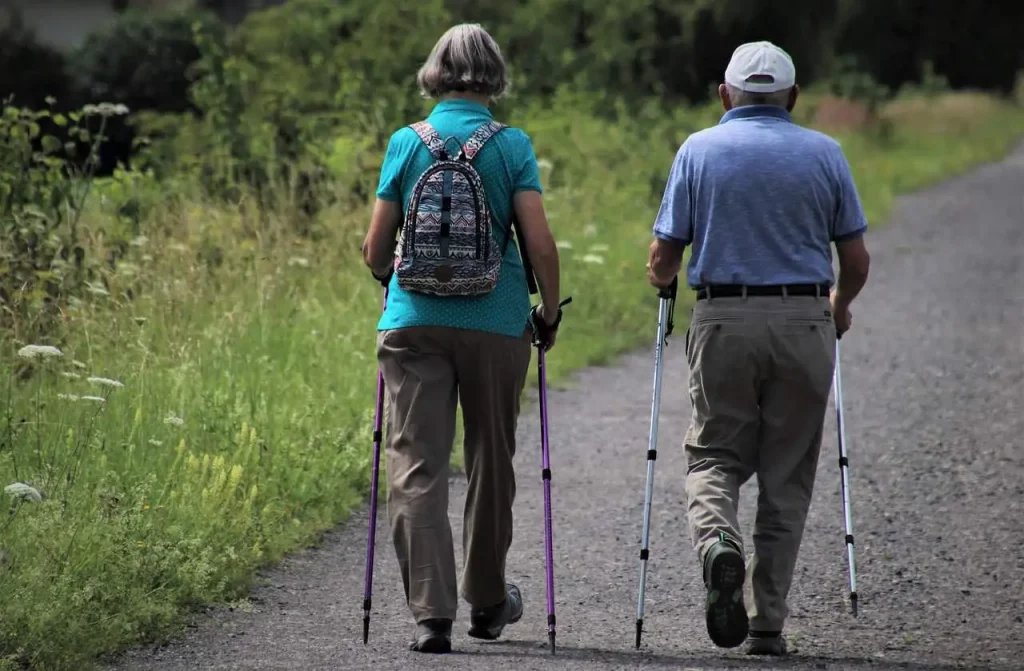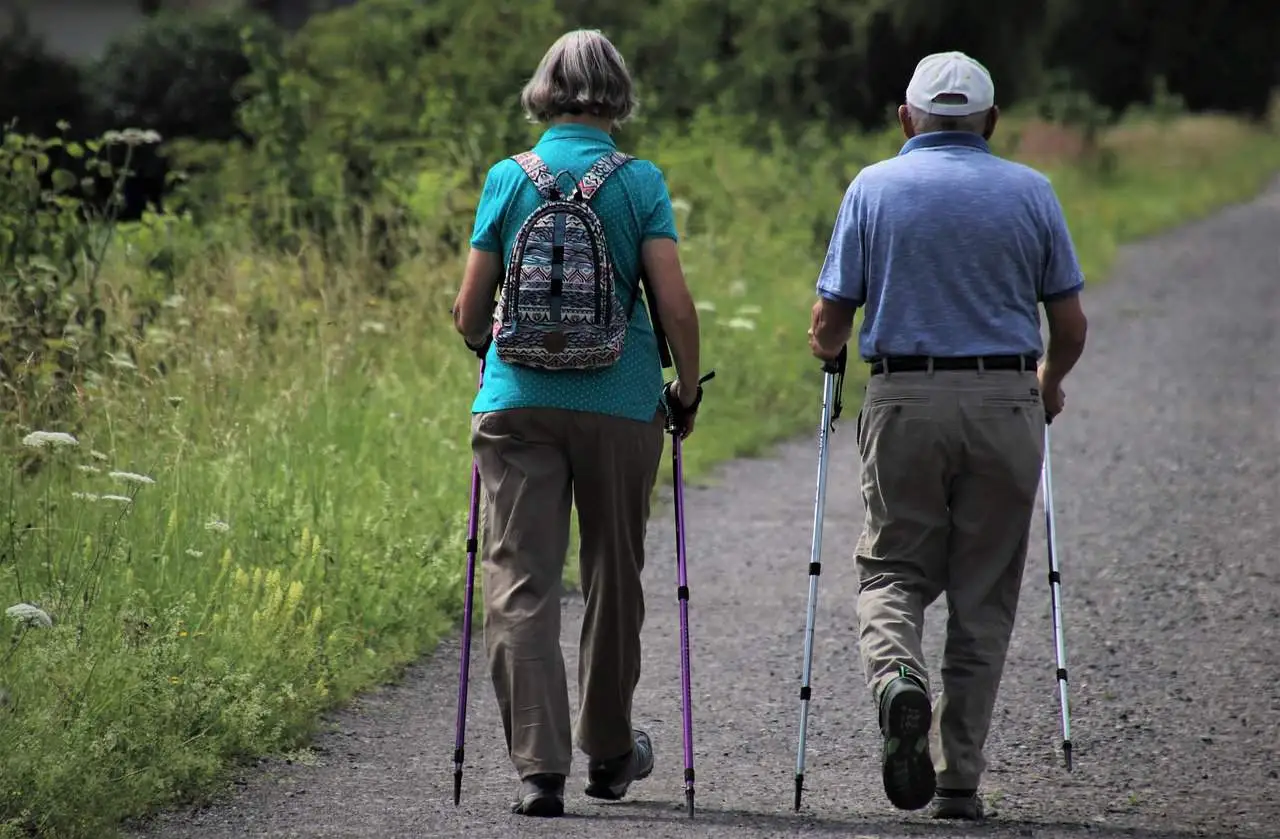
Spain boasts one of the longest working hours among advanced European countries. While telecommuting has allowed certain sectors to improve their work-life balance, it remains challenging to enjoy quality leisure time once the workday ends. Tasks like grocery shopping, taking children to swimming lessons, or picking up dry cleaning are also forms of work—the work of managing a household. To alleviate the daily mental burden, disconnecting is essential, and physical activity has always been an effective escape route.
Beyond sports disciplines aimed at toning muscles, more and more people are opting for walking, not as a means of gaining muscle mass or losing weight, but as a method of disconnection. So much so that some gyms offer walking clubs, spaces designed for group walks. One such example is the Walking Club at Club Metropolitan, a modality that aims, as explained by Mauro Carné, head of events at this chain of gyms in Madrid, to “offer a group fitness experience and take advantage of the benefits of collective training, in this case, hiking or urban walking.” This last point is crucial, as the city emerges as the new accessible stage for everyone to wander through. The walk offered by the sports center “consists of 45-60 minute sessions with low intensity, and is considered one of the best preventive therapies, allowing participants to work on different rhythms, inclines, and declines, thus engaging in cardiovascular activity,” they point out.
Technical Aspects, Benefits, and Routine
While walking is a low-intensity activity, it provides notable physical benefits, provided that it is practiced regularly and not sporadically. “If walking is done regularly and efficiently, the fitness of healthy adults can improve by 10 to 30% compared to the starting level. Those who were not very active before starting to walk regularly will achieve better results in improving their physical condition,” explains Javier de Simón Brezmes from the ReAdapta Physiotherapy clinic. Moreover, aside from helping us stay active, a walking routine can minimize certain muscle problems. “It helps improve physical condition, respiratory and cardiopulmonary function, and enhances the energy use by our muscles, making it useful for combating sedentary lifestyles,” state representatives from this Burgos-based clinic. While walking may seem automatic, similar to performing squats or push-ups, it also requires following a technique. According to ReAdapta Physiotherapy, this involves walking with a “neutral head position, relaxed shoulders, raised and open chest, and gentle tension in the glutes to facilitate lumbopelvic stabilization.”
Lack of free time is the primary barrier for those seeking to exercise, but walking is an easy alternative to incorporate into daily routines. According to the human resources consulting firm Michael Page, in Spain, the average commuting time is 36 minutes, six minutes less than the European average. If it is feasible to walk the distance, it can be a good way to start practicing. For optimal benefits from walking, “according to scientific evidence, the appropriate daily amount of walking for maintaining good health is an hour of continuous walking burning 150 additional calories of energy and with a total of 8,000 to 10,000 steps,” state representatives from ReAdapta Physiotherapy.
Combating Sedentary Lifestyles for Better Mental Health
Something as simple as walking can also be an ideal activity for combating loneliness when done in company. WeWalk, a platform present in 16 countries—although currently with limited presence in Spain—offers various group walking modalities: walks for seniors, morning walks, Nordic walking (with poles, a rising complement in urban green areas), or power walks (defined as brisk walking). They even offer walking sessions for companies, designed as group activities to promote teamwork, and classes to obtain certification as an expert walking trainer.
In a life dominated by productivity and a frantic pace, engaging in quiet activities as therapeutic tools—whether pottery, calligraphy classes, or sewing—has become a hobby that more and more people connect with. To enjoy more urban walks, citizens demand more green spaces and areas suitable for such activities. According to a survey conducted by the YouGov public opinion institute in March 2021 among residents of Madrid and Barcelona, 68% of respondents demanded more walking areas.
Enjoying leisure time, improving physical fitness, combating loneliness… the benefits of a good walk seem almost limitless. These benefits are augmented by its potential as an antidote against certain mental health problems. Alberto Ramírez, a psychologist and CEO of MentalMadrid, explains: “Physical exercise in general, whether walking, running, or any type of strength or cardio activity, greatly mitigates anxiety, stress, and even depression. This is because we increase the production of serotonin and dopamine, which are hormones that help us reduce anxiety and combat depression, leading to a significant improvement in our physical and emotional well-being.”
Spending a significant portion of the day sitting not only leads to muscle problems but also directly impacts the mind. Ramírez notes that “the World Health Organization considers it the fourth risk factor for mortality in the world” and adds that “it has been observed that those who lead a sedentary life have very low levels of BDNF [brain-derived neurotrophic factor], which is a protein with many brain functions. Among these, it prevents cognitive deterioration, increases concentration, improves blood flow in the brain, and enhances our attention.” With the arrival of spring, what better time to start walking?
Conclusion
In conclusion, walking emerges as a versatile and accessible activity that not only promotes physical health but also fosters mental well-being. In Spain, where long working hours and a bustling lifestyle are common, walking provides a much-needed respite from the daily grind. From structured walking clubs to solo strolls through urban landscapes, the practice of walking offers something for everyone.
As the demand for walking spaces grows and initiatives like WeWalk expand, more individuals are recognizing the value of walking not just as a form of exercise but as a social activity and a means of connecting with oneself and others. With its myriad benefits, from combating sedentary lifestyles to alleviating mental health issues, walking represents a simple yet powerful solution to the challenges of modern life.
As individuals and communities prioritize holistic well-being, integrating walking into daily routines and advocating for pedestrian-friendly urban environments can contribute to a healthier, happier society. So, lace up your shoes, step outside, and embark on a journey toward physical and mental vitality—one step at a time.


